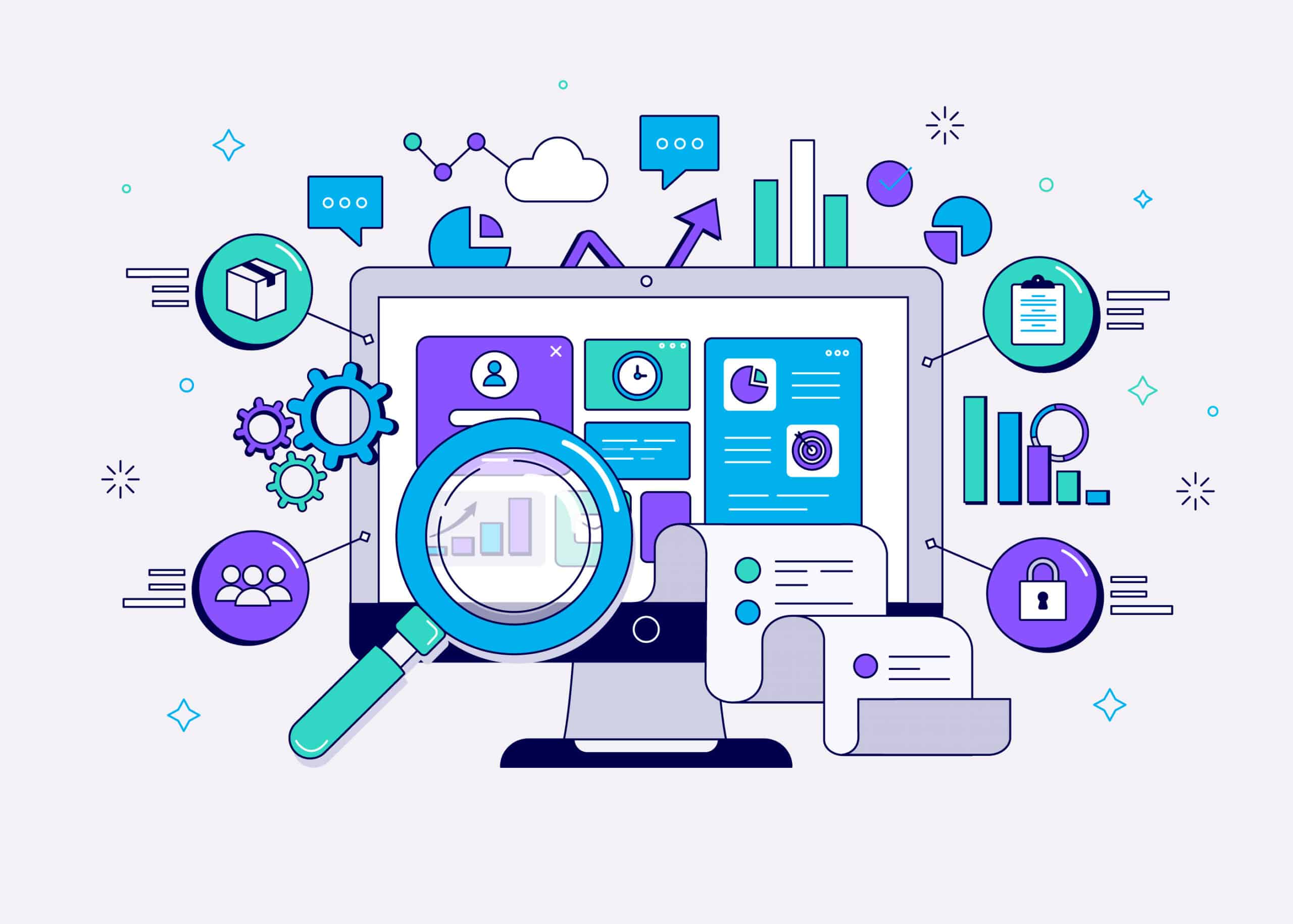
In our increasingly interconnected and digitized world, the realm of cybersecurity has emerged as a vital safeguard against the constant barrage of cyber threats. From malicious hackers seeking to exploit vulnerabilities to cybercriminals aiming to infiltrate sensitive data, the virtual landscape is a battleground of wits and technology.
In this blog, we’ll dive deeper into cyber security, penetration testing, and how to keep your digital assets safe and secure.
What Are the Latest Challenges to Cyber Security?
The digital landscape is continually evolving, and with it, new challenges to cybersecurity emerge. From the rise of sophisticated hacking techniques to the increasing reliance on interconnected devices, staying ahead of cyber adversaries has become a paramount concern for individuals, businesses, and governments alike. Let’s look at the latest challenges faced by cybersecurity.
Advanced Persistent Threats (APTs)
Among the latest cyber threats that have escalated in complexity are Advanced Persistent Threats (APTs). APTs are stealthy and sophisticated attack campaigns orchestrated by well-funded and patient adversaries. These threat actors meticulously target specific organizations or individuals to gain prolonged access to their networks, often remaining undetected for extended periods. Detecting and mitigating APTs demands enhanced cybersecurity measures, robust network monitoring, and advanced threat intelligence.
Ransomware Racket
Ransomware has become one of the most lucrative tools for cybercriminals. These malicious programs encrypt victims’ data, holding it hostage until a ransom is paid. In recent times, ransomware attacks have evolved from targeting individuals to crippling large-scale organizations, healthcare systems, and even government agencies. The challenge for cybersecurity experts lies in developing effective ransomware prevention strategies, timely incident response protocols, and secure data backup measures.
Insider Threats
While external cyber threats often grab headlines, the danger lurking within organizations remains a significant challenge. Insider threats can arise from disgruntled employees, unintentional errors, or those who have been coerced by external actors. Effective cybersecurity strategies must encompass measures such as user behaviour analytics, strict access controls, and employee training to detect and mitigate internal security risks.
Artificial Intelligence (AI) and Machine Learning (ML) Misuse
While AI and ML hold immense potential in enhancing cybersecurity, they can also be misused by cybercriminals. Threat actors can exploit AI algorithms to automate attacks, identify vulnerabilities, and bypass security defences. In response, cybersecurity professionals must adopt AI-driven security solutions that can dynamically counter evolving threats while ensuring the ethical use of AI for defence.
Cloud Security Concerns
With the widespread adoption of cloud computing, securing sensitive data and applications in the cloud has become a top priority. Misconfigurations, data breaches, and insider attacks are among the key cloud security challenges. Employing robust encryption, multi-factor authentication, and comprehensive auditing and monitoring are essential steps in safeguarding cloud environments.
As the digital landscape continues to evolve, so will the challenges to cybersecurity. Organizations and individuals must remain vigilant and adapt their defence strategies to combat ever-advancing cyber threats.
What Is Penetration Testing, and Why Is It Essential?
Two crucial pillars stand tall to safeguard your business from potential threats and vulnerabilities: penetration testing and robust software solutions. These components work hand in hand to create a formidable defence strategy that protects your valuable assets and sensitive information.
Penetration testing, often referred to as ethical hacking, is a proactive approach to identifying and addressing vulnerabilities within your business’s digital infrastructure. This process involves simulating real-world cyber attacks to expose potential weak points that malicious actors might exploit. By conducting penetration tests regularly, your business gains invaluable insights into its security posture and can take necessary steps to mitigate risks.
Penetration testing serves as a critical litmus test for your cyber security measures. It helps you identify vulnerabilities that might not be apparent through routine security checks. Incorporating penetration testing into your cyber security strategy demonstrates your commitment to proactive defence and instills confidence in your clients and stakeholders.
Equally vital to your cyber security strategy is the implementation of robust software solutions. Effective security software provides layers of protection against a wide range of threats, from malware and ransomware to data breaches and insider attacks. These solutions not only detect and prevent malicious activities but also enable rapid response and recovery in the event of an incident.
Investing in top-tier security software is akin to fortifying your digital fortress. Choose solutions that are tailored to your business’s unique needs and industry requirements. Regularly update and patch your software to stay ahead of emerging threats and vulnerabilities. By doing so, you establish a strong defence mechanism that adapts to the ever-evolving cyber threat landscape.
Identifying Vulnerabilities
One of the fundamental reasons penetration testing is essential is its ability to reveal vulnerabilities and security gaps within a system or network. By imitating the tactics of malicious hackers, pen testers can identify weaknesses that might otherwise go unnoticed, such as unpatched software, misconfigurations, or weak authentication mechanisms.
Mitigating Risk
Through the discovery of vulnerabilities, organizations can proactively address security risks and minimize the likelihood of cyberattacks. By fixing weaknesses before they are exploited, businesses can prevent data breaches, financial losses, and reputational damage.
Compliance and Regulatory Requirements
In many industries, compliance with specific cybersecurity standards and regulations is mandatory. Penetration testing often plays a crucial role in meeting these requirements. Regular pen tests demonstrate due diligence and a commitment to protecting sensitive data, helping businesses maintain compliance with industry regulations and legal obligations.
Safeguarding Customer Trust
With data breaches and cyber incidents making headlines regularly, customers have become increasingly vigilant about the security practices of the companies they engage with. Penetration testing can instill confidence in customers, demonstrating a commitment to data protection and a proactive approach to cybersecurity.
Continuous Improvement
Cybersecurity is an ongoing process, as new threats and vulnerabilities emerge regularly. Penetration testing should be seen as an iterative process that ensures security measures are continually adapted and strengthened. Regular assessments help organizations stay one step ahead of potential attackers.
The benefits of penetration testing are far-reaching, from protecting customer trust and complying with regulations to minimizing risks and enhancing overall cybersecurity resilience.
To maintain a strong security posture in an ever-changing digital landscape, businesses and individuals must embrace penetration testing as an integral part of their cybersecurity strategy. By doing so, they can confidently protect their assets, data, and reputation, ensuring a safer and more secure digital environment for all.
What Steps Can You Take to Safeguard Your Digital Assets?
We rely on numerous digital assets, such as financial accounts, personal information, precious memories, and valuable documents, all of which are vulnerable to cyber threats and data breaches. Ensuring the safety and security of your digital assets is paramount. Here are some essential steps you can take to safeguard your digital treasures and protect what matters most.
Strengthen Your Passwords
The first line of defence against unauthorized access is strong passwords. Create unique and complex passwords for each online account and avoid using easily guessable information. Combine uppercase and lowercase letters, numbers, and special characters to create robust passwords that are difficult to crack. Consider using a reputable password manager to help you keep track of your various passwords securely.
Enable Multi-Factor Authentication (MFA)
MFA adds an extra layer of protection by requiring additional verification beyond the password. When enabled, you’ll need to provide a second form of identification, such as a fingerprint, one-time verification code, or authentication app, making it significantly harder for cybercriminals to breach your accounts.
Regularly Update Software
Outdated software can be exploited by hackers to gain access to your devices and data. Make sure to keep your operating systems, apps, and antivirus software up to date. Most software updates include security patches that protect against known vulnerabilities.
Backup Your Data
Data loss can occur due to hardware failure, cyberattacks, or accidental deletions. Regularly backup your important files and documents to an external hard drive or a secure cloud storage service. Cloud storage offers the added advantage of offsite protection, minimizing the risk of data loss in case of physical damage or theft.
Be Cautious with Emails and Links
Phishing scams are a common method for hackers to trick individuals into divulging sensitive information. Exercise caution when clicking on links or downloading attachments from unfamiliar or suspicious emails. Verify the sender’s identity before providing any personal information.
Educate Yourself
Knowledge is key to safeguarding your digital assets. Educate yourself about cybersecurity best practices. Discuss the risks of sharing personal information online and the importance of maintaining privacy settings on social media platforms.
Secure Your Wi-Fi Network
A poorly secured Wi-Fi network can expose your devices and data to hackers. Change your default router password, enable WPA2 or WPA3 encryption, and hide your network’s name (SSID) to add an extra layer of protection.
Limit Information Sharing on Social Media
Be mindful of the information you share on social media. Oversharing personal details can expose you to identity theft and other types of cyber threats. Set your profiles to private and carefully manage your connections to ensure you’re sharing information only with trusted individuals.
Your digital assets represent a significant part of your life, and protecting them is crucial in today’s technology-driven world. By following these essential steps, you can safeguard your digital assets and enjoy peace of mind knowing that you’ve taken proactive measures to protect what matters most.
Legacy systems can pose significant security risks to a business, as they may have vulnerabilities that have not been patched or updated for years. By leveraging Mantrax Software Solutions’ expertise in legacy software modernization and security, businesses can significantly reduce the risk of security breaches and data compromises. Upgrading and securing legacy software not only enhances overall security but also enables businesses to leverage new functionalities and technologies that can drive innovation and growth. Book a discovery call with us to keep your applications secure and up to date.




